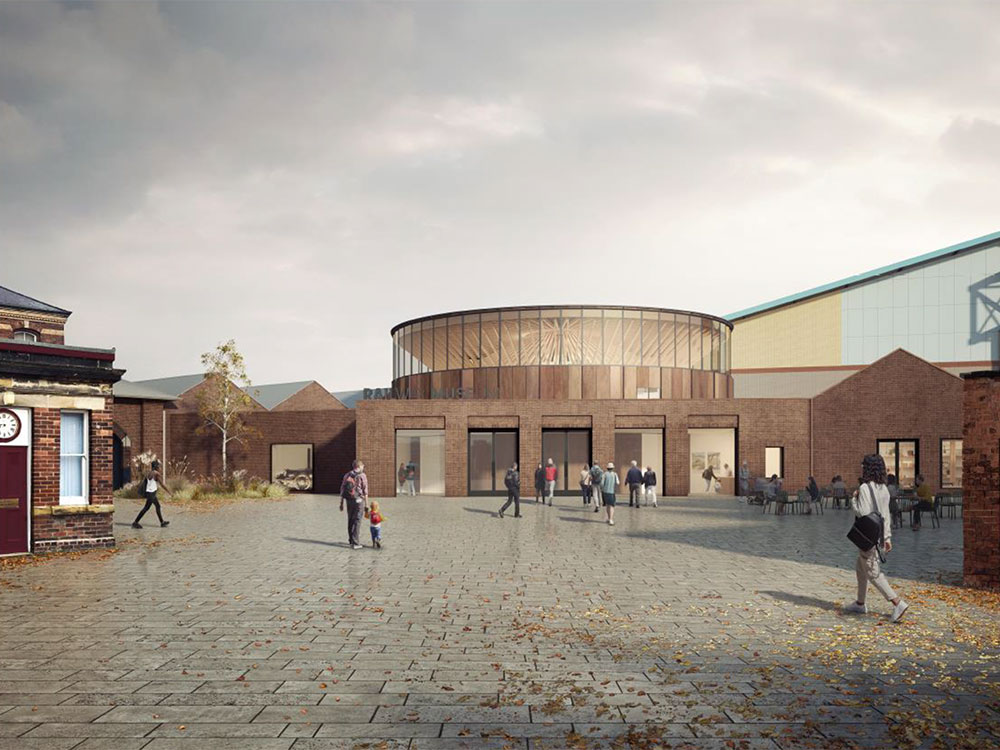The National Railway Museum’s controversial proposals for a new central hall have been approved – after a knife-edge vote.
Planning committee chair Cllr Chris Cullwick used his deciding vote after a four-hour discussion about the NRM’s plans, which will see the two halves of the museum united with a rotunda.
The plan has attracted significant opposition from residents as it will see Leeman Road – a direct, 24/7 route to and from the city centre for around 4,000 people – cut off.
The application was deferred at a meeting last month for an equalities impact assessment to be carried out after some councillors raised concerns about the impact on disabled people.
That assessment was described as “a hastily completed desktop exercise” by disability rights campaigner Flick Williams, while specialist access consultant Helen Kane described it as having “serious failings”.
Residents will only be able to get through the museum during opening hours, will have to queue at busy times and bags could be searched.
An alternative route around the museum – around 400 metres longer – has to be in place before Leeman Road is closed.
Paul Clarke, a director of the St Peter’s Quarter Residents’ Association, said: “The applicant has ignored the views of local residents at every turn – putting their own commercial interests first.”
Holgate ward councillor Kallum Taylor added: “These plans remove the only route that is direct and always available for residents.”
NRM director Judith McNicol said the museum took “issues surrounding access and equality very seriously” and explained that they had employed accessibility consultants when designing the building.
She explained that other designs, including underpasses, bridges and 24/7 routes through the hall, had been rejected at earlier stages as they were either unpopular with the public or had raised safety concerns from the police.
Planning consultant Janet O’Neill said: “You can never make everybody happy. There’s a clash between what the residents and what the museum wants…to say no stone’s been left unturned isn’t an exaggeration.”
While some councillors said they could see no legal reason not to back the application, several expressed disappointment that a 24/7 access solution had not been found and felt the process had damaged the NRM’s reputation.
Cllr Michael Pavlovic said: “I cannot support, as a human being and a member of the planning committee, any design that effectively sells people with certain protected characteristics down the river.”
Cllr Rosier Baker said: “I feel very uneasy supporting the museum carrying on with a plan that a lot of people have a lot of fears about.”
Cllr Stephen Fenton added: “There are impacts – I don’t think anyone disputes that – but I don’t think it’s fair to say that work hasn’t been done to look at mitigating those impacts.”
Cllr Katie Lomas said she could not support the application because museum opening hours and the availability of staff to help residents through the building could not be guaranteed.
Coun Jonny Crawshaw, who had to leave early for personal reasons, indicated he was likely to have voted against.
The NRM application was scheduled to be discussed first on the agenda, but was later moved to the last item. Cllr Crawshaw said he felt “sick” that he was unable to takCllre part and said he was “deeply unhappy” about the re-ordering of the meeting.
Voted for: Nigel Ayre; Tony Fisher; Stephen Fenton; Sam Waudby; Chirs Cullwick.
Voted against: Rosie Baker; Michael Pavlovic; Katie Lomas; Janet Looker; Martin Rowley.
Speaking after the meeting, Holgate ward councillor Rachel Melly said: “This decision is a huge blow for local residents. This development will disproportionately affect the transport options for disabled people, women, children, pedestrians and cyclists going about their daily lives.
“It will also add to the parking pressures and congestion problems already impacting the local community.
[tptn_list limit=3 daily=1 hour_range=1]
“Local residents have once again been treated as collateral damage for the museum’s private ambitions. We still urge the NRM to meaningfully engage with the local community to develop plans that are less detrimental.”
